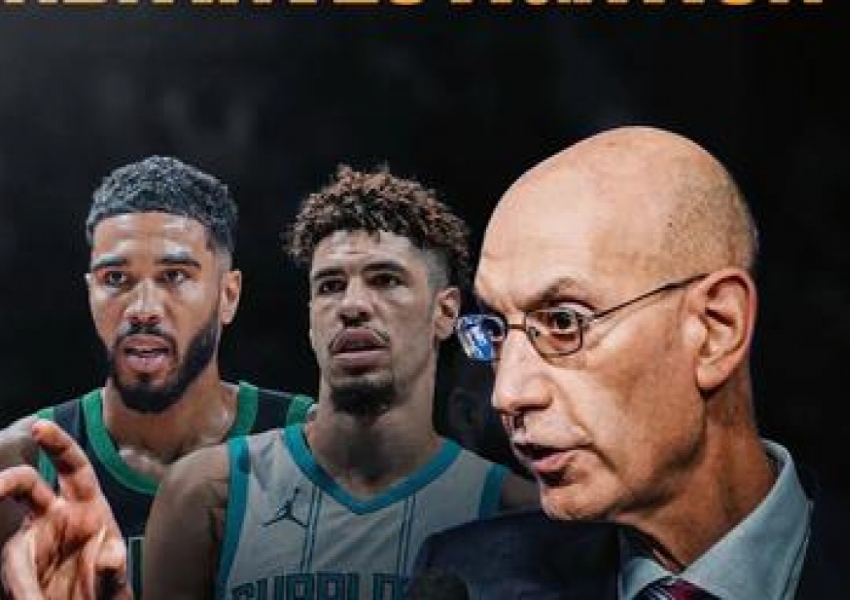Official Investigation: Has the Three-Point Era Really Ruined the NBA?
The NBA has fully embraced the three-point revolution. This season, teams are attempting an average of 37.5 three-pointers per game. The Denver Nuggets take the fewest with 30.8 attempts per game (still more than the league average from just a decade ago), while the Boston Celtics top the league with a staggering 50.4 attempts per game and 18.5 makes—both all-time highs.

To understand how far the league has come, let’s examine the past two decades:

- 2004-05 season: 15.8 three-point attempts per game
- 2009-10 season: 18.1 attempts
- 2014-15 season: 22.4 attempts
- 2019-20 season: 34.1 attempts
In 2015, when the Golden State Warriors, led by the Splash Brothers, won their first championship, many marveled at their reliance on the three-point shot. Back then, the Warriors averaged just 27.0 attempts per game, fewer than this year’s league-low Nuggets. It’s undeniable—three-point shooting has fundamentally reshaped the NBA.

The Celtics provide a clear example. Their prolific three-point shooting has propelled them to historic levels of offensive efficiency, earning them a championship and positioning them as this season’s title favorites. However, the rise of the three-pointer has sparked debates about the league’s entertainment value and declining TV ratings.
Adam Silver Weighs In
When asked about potentially extending the three-point line to address concerns, NBA Commissioner Adam Silver dismissed the idea. "Historically, we’ve adjusted the three-point line, but I don’t think that’s the solution now. The data suggests that if we extend the line, it would lead to more congestion near the basket rather than encouraging mid-range shots," Silver explained.
Silver acknowledged, however, that team strategies are becoming increasingly homogeneous. "I think we need to seriously consider diversifying offensive strategies. It’s not just about the three-pointer but also about the lack of variety in play styles. Teams are imitating each other, which is something we need to investigate," he added.
Regarding declining TV ratings, Silver offered a broader perspective: "Cable ratings have dropped by double digits across all platforms this year. While early-season NBA ratings have dipped slightly, more people are consuming content through streaming services. Overall, our in-person attendance has reached record highs, and our social media engagement surpasses any other professional league. It’s not that people have lost interest in the NBA."
The Pros and Cons of the Three-Point Era
Silver’s remarks hold some truth. Extending the three-point line is unlikely to solve the league’s issues, and declining ratings aren’t solely due to gameplay concerns. The rise of streaming platforms, esports, and other entertainment options has reshaped how audiences consume sports.
Yet, it’s undeniable that NBA teams’ strategies are increasingly similar. Every game—whether it’s the preseason, regular season, or playoffs—features a barrage of three-point attempts. The All-Star Game, a showcase of the league’s best talent, often devolves into a three-point contest.
To address this, the NBA has implemented a new All-Star Game format this season, replacing the traditional East vs. West matchup with a mini-tournament featuring four teams competing for a championship. But does this truly solve the problem? LeBron James’ recent comments suggest otherwise: "Listen, this is a bigger issue than just the All-Star Game. Our game revolves around the three-point shot, and that’s a conversation that goes beyond one event."
Adaptation or Extinction
Solving the "three-point problem" seems nearly impossible in the short term. Three-point shooting is simply too effective. It increases offensive efficiency and creates mismatches, forcing teams to adapt or risk falling behind. This principle applies not only to teams but also to individual players.
Players without a reliable three-point shot are finding it increasingly difficult to secure contracts, let alone thrive in today’s NBA. Conversely, players who develop a consistent three-point shot often extend their careers. Al Horford is a prime example. When asked about the impact of the three-pointer on his career, Horford said, "Improving my three-point shooting has been a game-changer for me. It’s benefited my body and extended my career. It’s part of basketball’s evolution. In my rookie season, I never imagined seeing this many threes being taken—even 10 years ago, I wouldn’t have thought it possible."
Does the Three-Point Era Harm the NBA?
The emergence of the three-point era feels inevitable. As long as three-pointers are worth more than two-pointers, teams will prioritize them for better offensive efficiency. Those who don’t adapt will be left behind.
This shift hasn’t destroyed the NBA. Without the rise of the three-pointer, fans might never have witnessed the iconic Warriors-Cavaliers Finals clashes or the thrilling 2018 Rockets-Warriors series. Back then, no one was questioning TV ratings.
However, there’s a valid argument that the NBA has lost some of its diversity in play styles. When teams start to mirror one another, the uniqueness that once defined matchups fades. This lack of variety may be a factor in diminishing the entertainment value of some games.
What’s Next?
The NBA faces a critical question: How can the league maintain the excitement of the three-point era while encouraging more diverse styles of play? This balancing act will define the league’s future. As fans, analysts, and players alike grapple with these questions, one thing is clear—basketball continues to evolve, and the NBA must evolve with it.
Copyright Statement:
Author: focusnba
Source: FocusNBA
The copyright of this article belongs to the author. Reproduction is not allowed without permission.
Recommended Blog
- Time to Apologize: Has $8 Million Max Christie Finally Arrived?
- Breaking News: Jimmy Butler’s Trade Request Sends Shockwaves Through the NBA
- Averaging Six Threes Per Game! Farewell, Warriors—Jordan Poole Thrives as a Team’s No. 1 Option
- The Second-Best Center in the NBA? Can Karl-Anthony Towns Make First-Team All-NBA This Season?
- Luka Doncic Sidelined Again: The Fourth Injury Blow of the Season
- Jimmy Butler Forces a Trade: The Western Conference Braces for Chaos
- 41 Points on 25 Shots! Christmas Clash Between Bridges and Wembanyama Sparks Epic Showdown
- Public Frustrations: Where Did It Go Wrong Between Anthony Edwards and the Timberwolves?
- Confirmed Suspension: Goodbye, Qi Lin! A Blow to Xinjiang's Core
- Averaging 5 Points: Is Alex Caruso Worth $81 Million Over Four Years?
Hot Blog
- Tension in New York? Mikal Bridges Calls Out Thibodeau’s “Plantation-Style” Rotation!
- Kevin Durant = Three First-Round Picks? In Just Two Years, the Suns Lost Big!
- Major Decline! What Is De'Aaron Fox’s True Level with the Spurs?
- Completely Out of the Rotation! Why 25-Year-Old Cam Reddish Can't Get on the Court Anymore
- A Miraculous Buzzer-Beater—But What Level Is Kawhi Leonard Really At Now?
- 4,000 Threes! Just How Impossible Is Stephen Curry’s Latest Record?
- $110 Million Over Two Years—Butler Was Worth Every Penny
- $293M Supermax and an MVP? Is There Any Doubt Left for Shai Gilgeous-Alexander?
- $418M for Luka Dončić? Is the Lakers' New Star Worth It?
- 31-21-22! Did Jokic’s Historic Triple-Double Just Reignite the MVP Race?